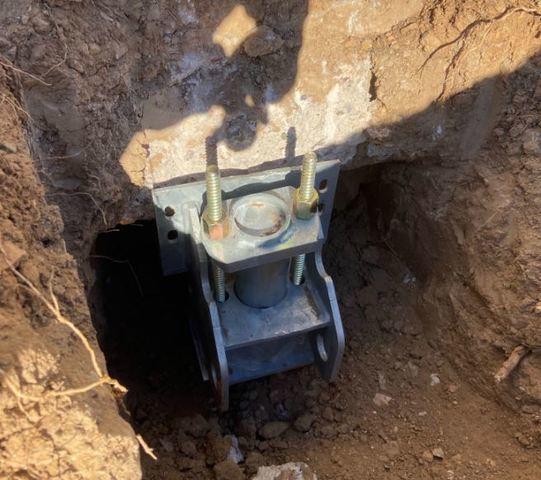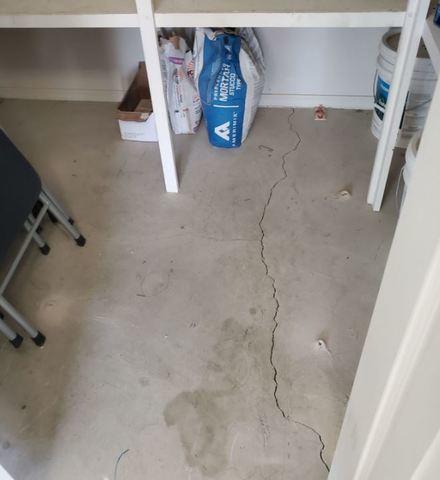Vail, AZ Foundation Repair Project
Challenge
The homeowners of this Vail, Arizona residence reached out to us at Arizona Foundation Solutions upon noticing several indicators of a potential foundation issue.
During our inspection, both the exterior and interior of the property were thoroughly assessed to identify any underlying concerns. Outside, we paid close attention to signs such as foundation cracks, wall cracks, grading issues, drainage problems, the presence or absence of gutters, bowed retaining walls, and any nearby large trees that could impact the foundation.
Inside, our inspection focused on examining floor cracks, wall cracks, ceiling cracks, sloping floors, misaligned doors and windows, as well as any bowed walls. These observations were meticulously documented to provide a comprehensive overview of the property's condition.
In addition to visual inspections, we conducted a manometer survey to measure the differences in interior floor elevations. This survey, which involves using precise instruments to assess floor flatness, helped us create a detailed topographical map highlighting any areas where the foundation may have shifted or where support and stabilization are required. Furthermore, it enabled us to detect any instances of floor slab heave or settlement, providing valuable insights into the foundation's stability.
By combining these inspection methods, we can develop a tailored solution to address any foundation issues and ensure the long-term stability of the property. If necessary, we may recommend the application of a high-quality sealant for concrete or cement sealer to mitigate any existing or potential damage.
Solution
After examining the home and performing the manometer survey, Arizona Foundation Solutions believes the home could be experiencing minor foundation settlement at the west and southwest portions of the garage/gym and in the southern portion of the living room as shown by the damage) and lower readings. The drop off in floor elevations on the topographical map is consistent with a foundation settlement pattern. Foundation settlement can be caused by one or any combination of many factors including sub-grade saturation of moisture due to poor drainage, years of storm runoff, plumbing leaks, improper compaction, the lack of a proper foundation system, and/or (in most cases) natural earth movement.
There are cracks in the floor slab. When the slab cracks all the way through, the separate sections can move independently of one another. This allows for severe damage to flooring and other signs of interior stress like pinched doors, drywall, and/or ceiling cracks.
The settlement at the western and southern portions of the garage/gym and in the southern portion of the living room appears to be minor at this point in time. A protection plan has been designed to stop these areas from any additional settlement and further damages. AZFS can permanently stabilize these areas to protect the foundation from future settlement at the Homeowners discretion.
Arizona Foundation Solutions believes that the proper way to permanently stop the perimeter foundation settlement is to underpin the areas that are experiencing movement. Underpinning is the process of installing deep foundation elements called piles. Piles are engineered foundation supports that are driven down past the unstable soils and are then locked up into load bearing strata, which can support the loads that are transferred to them. Once the piles have been installed, they can be used to lift the perimeter foundation up to it’s Highest Practical Maximum. The piles should be spaced approximately six to eight feet on center and should start and stop near the hinge points of movement (exact spacing to be determined after load bearing calculations). In this case, the piles would be located at the western and southern portions of the garage/gym. The slab can then be treated by injecting a lightweight expansive polyurethane to fill existing voids and lift the floor slab. This is done by drilling small 3/8” holes in the slab after which polyurethane grout is injected directly under the slab to raise it up to it’s Highest Practical Maximum. Using the expansive materials will help prevent additional slab settlement by compacting the upper layer of soil as it expands.
Arizona Foundation Solutions also believes that the proper way to deal with floor settlement, in the living room, is to either use interior slab piers or compaction grout the low areas in distress. Either method can be acceptable depending on homeowner goals and is summarized as follows: Compaction Grouting: this is done by coring 2-3” diameter holes in the floor. The holes would be spaced approximately 6’ O.C. Steel casing is driven to refusal after which low very thick cement grout is pumped under high pressure. Compaction Grouting is several orders of magnitude more expensive than poly level however it does improve and stabilize any loose soils that are in need of improvement. Prior to installing compaction grout, AZFS recommends a soil sample be performed to determine what type of grout mix would be necessary.
Interior slab piers can also be placed at the lowest portion of the slab. These piers can be used to attempt to lift and help to level the home. These slab piers are a protection plan and may be installed at the homeowners discretion.
Composite interlocking can be performed to tie the broken pieces of the concrete together. The existing cracks will be cleaned and non-parallel lines will be cut across the existing cracks. Next carbon fiber laminate stitches will be inserted into the non-parallel cuts and then the gaps will be filled with a 2 part poly.
Finally the crack should be ground smooth to minimize the differential. If done properly, this will allow the slab to function as one floating unit to help prevent the damages to flooring, ceiling and walls. If this is instead expansion joint separation, the joint should be cleaned, routed, and re-caulked with an expansive joint filler. A determination as to which repair is needed will be made on site once the crack is exposed.
Since storm runoff is responsible for the majority of the moisture that pools next to the foundation, gutters need to be installed and modified to prevent the storm runoff from increasing the amount of foundation movement. A proper gutter system should be installed to discharge the storm runoff a minimum of 10 feet, preferably 20 feet away from the foundation. We do not recommend installing gutters that discharge next to the foundation as this will only increase the probability of a foundation problem.
Project Summary
Engineer: Nestor B.











